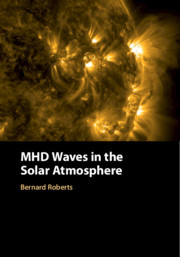Description
MHD Waves in the Solar Atmosphere
Author: Roberts Bernard
Develops a fresh mathematical approach to coronal seismology, explaining oscillatory phenomena by drawing upon original research and complex modelling techniques.
Language: English
Subject for MHD Waves in the Solar Atmosphere:
Approximative price 190.50 €
In Print (Delivery period: 14 days).
Add to cart
Publication date: 07-2019
524 p. · 18x25.4 cm · Hardback
524 p. · 18x25.4 cm · Hardback
Description
/li>Contents
/li>Biography
/li>
This volume presents a full mathematical exposition of the growing field of coronal seismology which will prove invaluable for graduate students and researchers alike. Roberts' detailed and original research draws upon the principles of fluid mechanics and electromagnetism, as well as observations from the TRACE and SDO spacecraft and key results in solar wave theory. The unique challenges posed by the extreme conditions of the Sun's atmosphere, which often frustrate attempts to develop a comprehensive theory, are tackled with rigour and precision; complex models of sunspots, coronal loops and prominences are presented, based on a magnetohydrodynamic (MHD) view of the solar atmosphere, and making use of Faraday's concept of magnetic flux tubes to analyse oscillatory phenomena. The rapid rate of progress in coronal seismology makes this essential reading for those hoping to gain a deeper understanding of the field.
1. General principles; 2. Waves in a uniform medium; 3. Magnetically structured atmospheres; 4. Surface waves; 5. Magnetic slabs; 6. Magnetic flux tubes; 7. The twisted magnetic flux tube; 8. Connection formulas; 9. Gravitational effects; 10. Thin flux tubes: the sausage mode; 11. Thin flux tubes: the kink mode; 12. Damping; 13. Nonlinear aspects; 14. Solar applications of MHD wave theory; References; Index.
Bernard Roberts is Emeritus Professor of Solar Magnetohydrodynamics at the University of St Andrews. Scotland. His important contributions to the field over the past forty years have been recognised with an election to the Royal Society of Edinburgh in 1997, a Saltire Scottish Science Award in 1998, and, in 2010, the Royal Astronomical Society's prestigious Chapman Medal, awarded for 'investigations of outstanding merit in solar-terrestrial physics'.
© 2024 LAVOISIER S.A.S.
These books may interest you

Magnetohydrodynamics of the Sun 98.14 €



